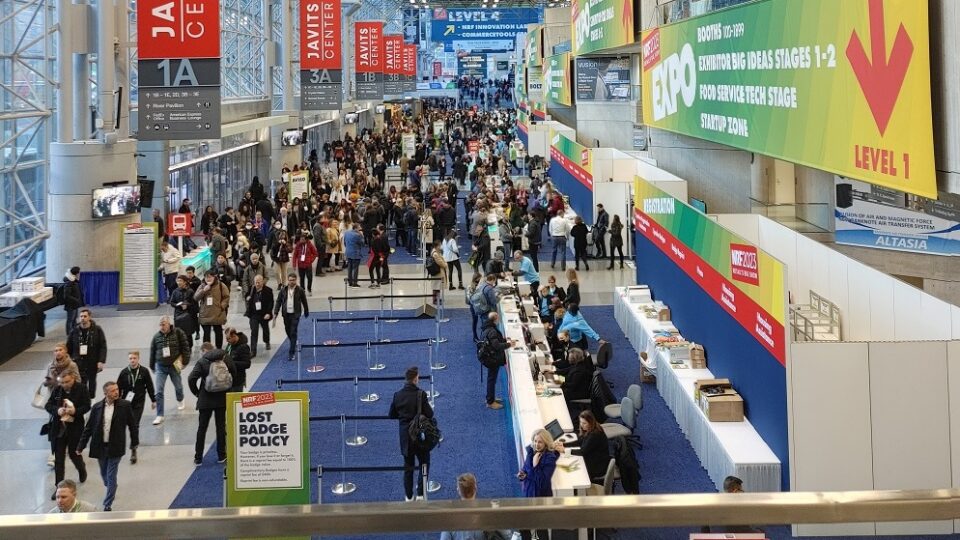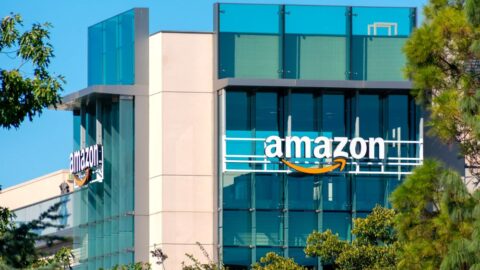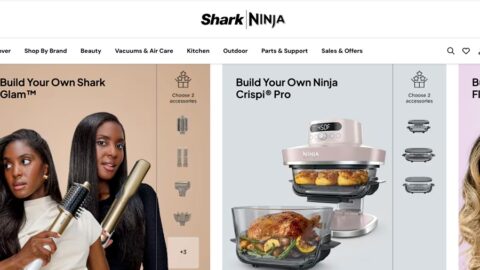The NRF Big Show, held in NYC Jan. 15-17, did more than bring together more than 35,000 attendees and 1,000 exhibitors. The event also gives us business editors the chance to suss out the major trends that retail decision-makers will be grappling with in 2023. Here’s our take on just a few of the key themes revealed at the show, based on attending sessions and talking to retailers, solution providers and industry experts at the Big Show and illustrated with quotes from session presenters and attendees:
- To prepare for a potential economic recession this year, retailers will focus on improving margins and overall profitability in 2023 by making operations more cost-effective;
- Retailers also will be actively building up emerging revenue opportunities like retail media networks, marketplaces and resale/circular commerce — the last of which can help with sustainability, also a big theme at the event; and
- Attracting and managing talent will be a prime area of focus, with retailers seeking technology and tools that make workers’ jobs easier but also stepping up diversity and inclusion efforts and placing a greater emphasis on listening directly to associates’ needs and wants.
Profitability is the Name of the Game
Retailers will be looking for strong returns on investment throughout the enterprise, which means potentially putting projects with a longer-term payback — like the metaverse — on the back burner. Economic headwinds are likely to blow harder when consumers’ savings from the pandemic dwindle, which a Charles Schwab analyst believes could happen by Q3. “There is built-up excess savings — estimates vary in the $1.5 to $2 trillion range — and that has been fueling consumption. The rub, however, is that that is skewed up the wealth spectrum — the lowest quintile right now is underwater, they don’t have savings and that’s why you’ve seen a big pickup in the use of revolving credit, which is a little troublesome. We have to be careful about extrapolating too far into the future, because we are starting to see some pockets of consumers getting a bit tapped out.” — Liz Ann Sonder, Managing Director and Chief Investment Strategist, Charles Schwab
“The consumer is making trade-offs with inflation and other economic worries, so we’ll need to balance our portfolio, [putting greater emphasis on categories like] food and beverage, household essentials, beauty products and clothing.” — Christina Hennington, EVP and Chief Growth Officer, Target
“Consumers are being methodical with their money; often, affordability tops brand loyalty in times like this. [An international survey of 20,000 consumers] revealed that 46% of consumers say they’re saving money, so [the question for retailers becomes] how do you reach those consumers?” — Michelle Evans, Global Lead, Retail and Digital Consumer Insights, Euromonitor International
“In general, with global business, [the biggest challenge] is that there are so many opportunities. It’s about narrowing those down and prioritizing and focusing so you can succeed faster and sooner rather than only get halfway there in many places.” — Valerie de Charette, VP, Head of International Digital, American Eagle Outfitters
Marketplace, Retail Media Network and Resale Opportunities
Retailers are looking for topline growth as well as bottom-line savings and they believe they’ll find it in complementary businesses and offerings. For example, almost all businesses will need to have a marketplace strategy, according to the CEO of BigCommerce, who previously worked at eBay and PayPal: “My philosophy when it comes to marketplaces, for brands and even some retailers, is that you’re unwise to think of them as the competition. You need to think of them as an opportunity. Most brands should have a winning strategy on marketplaces, whether it’s Amazon or eBay or category-specific marketplaces like Farfetch or ViVino.” — Brent Bellm, CEO, BigCommerce
For Neiman Marcus, which has partnered with Farfetch, marketplaces have been an opportunity to both cut costs and generate revenues. According to CEO Geoffroy van Raemdonck, the retailer saw 50% growth online last year and was able to migrate the Bergdorf.com site onto the Farfetch tech platform. The marketplace’s global tech, currency, translation services and call center has helped with scaling up to 200 countries.
Retailers definitely see the advantages of operating their own media networks, leveraging their rich first-party customer data and multiple touch points. Profit margins in this area are typically many times larger than those generated by selling products to consumers, but some nascent media “moguls” are concerned about measurement, data management and connecting ads to customer actions in the digital and physical worlds (just like with the rest of retail).
“We want to have an API measurement capability to plug into mix modeling, and we’re leaning into this as quickly as we can. Measurement needs to grow up in retail media, especially for CPG [products] given the frequency of purchase. Additionally, if a car ad is seen on Pinterest and the consumer goes to a dealer and buys the car from the ad they saw or clicked on, [we want to know] how we can have greater visibility into this purchase.” — Kristi Argyilan, SVP, Retail Media, Albertsons Media Collective
“At Nordstrom, we’re excited about the growth of brand advertising and offering new ad platforms and formats such as video to create much richer connections for our customers. Onsite advertising makes up 40% of our investment; 60% is off-site advertising. [But] siloed data is a huge issue to solve for here; 50% of our customers start their search online and then come into the stores. We’re navigating [putting] ads with the customer experience, but gently; [we want it to be] additive to the customer experience.” — Aaron Dunford, Sr. Dir. of Digital Merchandising and Marketing, Nordstrom
Resale is going to be a big value-driving initiative for many retailers. IKEA, which already had a resale program in the form of its “As Is” section, expanded in 2022 to include buyback and refurbishment services. “We’re seeing it be a real traffic driver, because people come to sell a product they no longer need or shop the refurbished options, and then stay and shop the rest of the store. In the seven months since IKEA put Buy Back & Resell in place we’ve seen a 218% increase in items bought and sold through the service, so in our opinion the sky’s the limit. Additionally, it’s an important piece of our efforts to meet our 2030 sustainability targets.” — Seana Strawn, Head of Retail Design and Home Furnishing Identity, IKEA U.S.
Workforce Management
Retailers are seeing ROI from investments in associate technology, such as the apps for Lowe’s associates powered by Zebra: “Everything we do is to unlock productivity. We estimate that the app brought associates from spending 60% of their time on mundane tasks and 40% on customer service to 40% on tasks and 60% on customer service today. There are three primary beneficiaries: The customer has a faster and more consistent experience; for the associate, the job is more exciting and they’re able to be efficient and get more done; for Lowe’s, it’s great because the store benefits from the added efficiency can be used to better service the shelves while providing superior customer service.” — David Shoop, SVP of Technology, Stores, Corporate Services Pro and Services, Lowe’s
“We’re simplifying the work the employees need to do, seeing how our tech can support them and empower them to connect with customers. We also recently launched a Cake Decorator program in our apprentice program, part of helping our employees to upskill, offering professional development opportunities and creating a new talent pool.” — Jason Buechel, CEO, Whole Foods
“We’re engaging associates to help build the brand as we grow. If the store team understands why they’re doing what they’re doing, they will feel more engaged. Enablement is so important. Additionally, we’re rolling out RFID now and a workforce management tool, and we’ve partnered with Zipline to operate more efficiently, grow and scale.” — Karen Peters, Global Head of Retail and Store Development, Alo Yoga
“We’re putting a greater emphasis on opportunities for employees; 1,100 people are enrolled in a no-fee education program, where we work with four-year colleges and community colleges that employees can access. We’re also spending a lot of time upgrading our facilities and in our HQ offices too, supporting flexible work, in-office standards and data entry in more automated ways.” — Steven Williams, CEO, PepsiCo













